Potato variety Meteor
Meteor is a very early potato variety (Solanum tuberosum) for table use. Bred by Russian breeders of FGBNU "All-Russian Research Institute of Potato Economy named after V.I. AG Lorkha ”by crossing the numbered hybrid 84.19 / 44 with the Shurminsky-2 variety. In 2013, it was included in the state register of plants of the Russian Federation. Zoned in seven regions: Central, Volgo-Vyatka, Central black earth, Middle Volga, Ural, West Siberian, Far East. It is appreciated for its high yield and the ability to obtain early full-value products
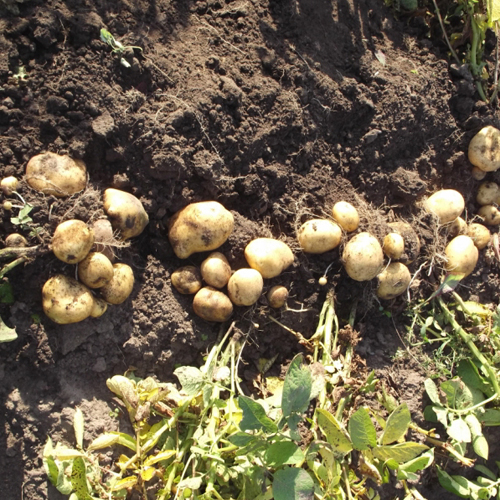
It takes about 60 days from full sprouting to ripening. The first digging can be carried out already on the 45th day of the growing season.
The plant is tall, intermediate type, semi-erect, with a fairly abundant amount of green mass. The leaves are medium to large and have a dark green color. The flowers are small, white. Anthocyanin coloration of the inner side of the corolla is very weak or absent.
In one nest of Meteora, about 10-12 large tubers of an oval-rounded shape, equal in size, with an average weight of 102-147 grams, are formed. The peel of the potato is smooth to the touch, thin, and yellow in color. The cut flesh is light yellow in color. The eyes are not large, the depth of occurrence is medium or less.
According to the results of state tests, the average indicator of marketable yield was recorded in the range of 209-404 c / ha, at the level of standards Zhukovsky early and 164 kg / ha more than Dolphin indicators. During the first digging, on the 45th day of the growing season, it was possible to get 175-213 c / ha, at the level of the results Zhukovsky early and 82 c / ha more than the standard Luck... At the second digging, on the 55th day after full germination, 229-332 c / ha were harvested, 19-60 c / ha more than Luck indicators. The maximum amount was obtained in the Chuvash Republic - 450 c / ha were harvested there, 114 c / ha higher than the Luck standards. Such a yield really deserves to be called high, given the early maturation of potatoes. Marketability of tubers 88−98%, keeping quality - 95%. In comparison with the characteristics of other varieties, these figures are quite impressive.
The taste is very good. The tubers are moderately boiled, they do not lose their shape during heat treatment, while they are easily cut into slices, wedges and cubes, which makes them very suitable for preparing salads, dressing soups, boiling in "uniform" or peeled, as well as baking and stuffing. The pulp is moderately dense, pleasant consistency, slightly watery, not powdery, does not darken when cut and cooked. The starch content in it ranges from 12-14.9%. By the way, Meteor has been repeatedly appreciated by gardeners as the best potatoes for frying and baking! But still, opinions on this matter differ, but we will talk about this later. The variety is good for mashed potatoes, but some other, more boiled varieties are much better for preparing this dish.
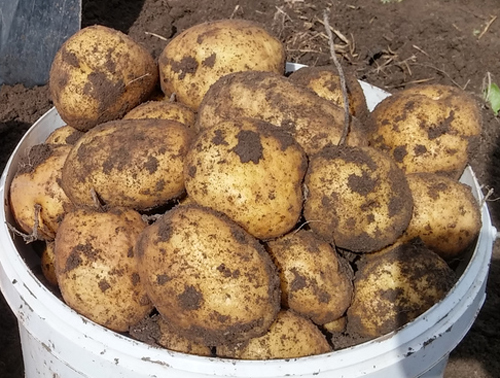
In agricultural technology, our hero is absolutely simple and does not need to create any special conditions. In addition, it can perfectly adapt to all types of soil and climatic latitudes. Plants show the best productivity on sandy loams and light loams, but on other soils, with the very minimum care, they can please you with a large number of large tubers. Due to its excellent ability to adapt to climatic conditions, this potato is actively grown in many regions of the country. Of course, for best results, there are some agronomic considerations that are described in more detail below.
- According to the originator, Meteor tubers can be planted very early in cold soil. However, if possible, it is still better to wait for the moment when the soil finally warms up to + 8−10 ° С and the threat of recurrent frosts has passed.
- Before planting, a selection of seed should be carried out.It is better to choose tubers of medium size and mass, without signs of pest and disease damage, as well as without mechanical damage.
- The planting is carried out according to the scheme 35 × 60-65 cm, the embedding depth is 8-10 cm. On heavy soils, the holes should be shallow, about 6 cm, or even less.
- During the growing season, plants need minimal maintenance, but standard agricultural practices should not be neglected. Timely watering and feeding, loosening the soil and hilling, weeding and preventive treatment against diseases and pests - all this can significantly increase the yield of the variety.
- Don't forget to maintain a crop rotation. If you follow it, you will protect plants from pathogens that remain in the soil after growing other crops, in particular nightshade. It is better to plant potatoes after legumes, siderates, zucchini, cabbage, onions, beets, cucumbers, garlic.
- Replace seed as needed to avoid tuber degeneration.
Meteor is highly resistant to diseases such as cancer, golden cyst nematode, moderately resistant to wrinkled and banded mosaics. According to the originator, it is relatively resistant to late blight in terms of tops, tubers are not susceptible to it. According to the observations of gardeners, there is also a weak susceptibility of plants to rot and scab.

Our hero has established himself quite well in a very short time of its existence on the market. It is especially appreciated for the early amicable formation of tubers, high yield, good presentation and excellent keeping quality. It should also be noted that it is undemanding to soils and climate, as well as unpretentious care, thanks to which it has spread widely across the household plots of many regions of Russia. By the way, the yield of the variety is relatively independent of weather conditions - even in very rainy or dry seasons, you will not be left without potatoes. Thus, Meteor can be called very reliable and stable, despite some disadvantages.
Now let's move on to the disadvantages. Reviews of gardeners are sometimes very ambiguous. Someone notes too watery pulp and a rather "ordinary", not outstanding taste, and someone objects to this opinion. In this aspect, of course, everyone's personal preferences play an important role. Some gardeners have given up on growing this variety precisely because of its mediocre taste. There are also reviews that voids are often formed inside the tubers, but this is most likely due to untimely harvesting and gross errors in agricultural technology.
Many potato growers are not satisfied with the size of the tubers. But there are also those people who seek to obtain very large copies, moreover, in large quantities. Even record holders weighing about 1 kg are growing! How can such a difference in opinion and observation be explained? Most likely, different approaches to cultivation and care, and maybe a banal difference in climatic zones.
Many gardeners also complain about the insufficient yield of potatoes. However, if we rely on official data from state tests, it can be assumed that small yields are associated with improper agricultural practices or poor nutrient and mineral composition of the soil. In general, taking into account both positive and negative reviews, it should be said that the potential of Meteor is quite high, and how much it will open depends only on you.
In addition to the originator, the cultivation of the variety is officially engaged in: the Egorsha farm in the Tula Region, the Korenevo Agrocenter LLC in the Moscow Region, the Fat-Agro LLC in Alania, the Elite Potato LLC in Tatarstan, the Redkinskaya LLC agro-industrial company "in the Tver region., LLC" Kolos "in the Lipetsk region., FSUE" Kholmogorskoye "in the Arkhangelsk region.Timiryazeva in Moscow, Vozrozhdenie LLC in the Tambov region, Kapallinia farm in the Tula region, Green lines-Kaluga LLC, Tsentralnoe federal state unitary enterprise, Kstovsky district, Nizhny Novgorod region, Nizhny Novgorod research Institute of Agriculture, branch of the Federal State Budgetary Scientific Institution FANTS of the North-East, FSBSI “Tula Research Institute of Agriculture.
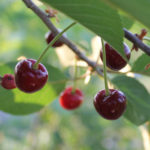


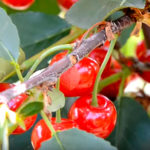
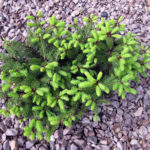




In the fall of last year, I decided to acquire normal varieties of potatoes from a normal seller. I ordered several pieces at the agrocenter - a partner of VNIIKH im. Lorkha (the author of the variety). Among those purchased was Meteor. Still, you want to eat early potatoes early. The people call these early ripening varieties "forty days", tk. the first harvest can be tried to be removed already 40 - 45 days after germination.
I planted the tubers at the end of April under the covering material, and by the middle of May, friendly shoots appeared. The land in that place is not good, so I fed it with Azofoskoy. Naturally, the plants started growing! The tops were of medium height.
In early July, it was decided to make the first digging. Honestly, I expected to see tubers with a maximum of walnuts - like ordinary potatoes. But what was my surprise when several tubers, slightly smaller than a tennis ball, rolled out of the ground on a shovel! The tubers were almost perfectly round in shape, the skin was yellow, rough. On average, in one bush there were 4 - 6 pieces of this size and 1 - 2 small ones. The potatoes tasted good. The whole family ate with pleasure.
I left a few bushes until autumn for seeds. By the beginning of August, the tops began to turn yellow and dry out. At the end of August, I dug everything up. Until August, it grew a little more, but not significantly. This means that the main growth is really going on for the first month and a half!
Next year I will plant a Meteor without fail!
The soil is medium loam, fertilized with humus and during planting it was also used for each potato - buysk fertilizers "Potato" + beneficial bacteria, spraying from a beetle with a potato aquarium was also combined 2 times (after 14 days, the 2nd time approximately). The disadvantage is that the Colorado potato beetle eats very well (more precisely, the larvae, and the beetle prefers to breed) compared to 3 out of 4 other varieties grown in the same place in the same season, despite the same treatment from the beetle. Advantages - early and uniform germination, all the potatoes have sprung up, even those that have been cut into several pieces, late blight struck the neighboring variety Luk'yanovsky, the meteor of no first tops with defeat. On the 75th day, from about 17-20 bushes (half a bed), I collected 17 kg (weighed a bag, did not count the bushes - beds from 14 to 16 meters long and about half of the garden comes out of the calculation - from 34 to 40 plants in the garden). Most potatoes weigh 200g, a smaller part or small or 300g approximately. I planted it at a distance of 40 cm in a row and 80 between the beds, and again I cut some of the potatoes into pieces (which did not affect the yield for the better - because it was with one stem of tops, for example, and there are fewer potatoes from such a bush).